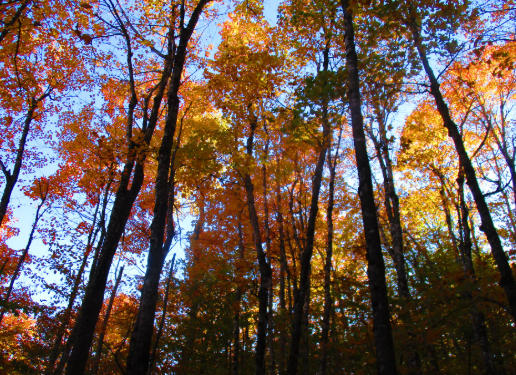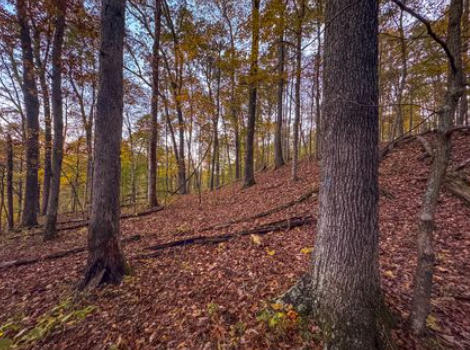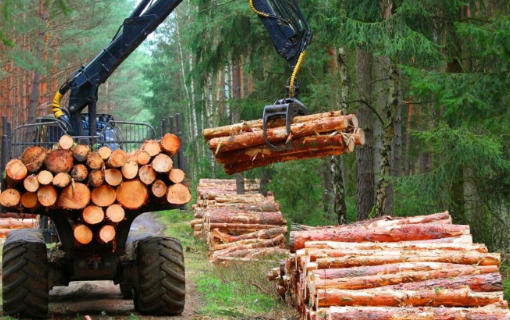Views: 222 Author: Rebecca Publish Time: 2025-10-31 Origin: Site











Content Menu
● Understanding Hardwood Timber Value
>> Key Concepts
>> Regional Differences and Accessibility
● Hardwood Timber Price Trends for 2025
● Market Dynamics and Forecasts
>> Economic Forces Shaping Timber Value
>> Policy and Trade Developments
● Timberland Appraisal and Selling Strategies
>> Step-by-Step Land Valuation
● Maximizing Hardwood Timberland Value
● Regional Value Table for 2025
● Market Risks and Opportunities
>> Volatility and Risk Factors
>> Opportunities for Timberland Owners
● Market Outlook for the Remainder of 2025
>> 1. What species bring the highest prices for hardwood timber?
>> 2. How often do hardwood timber prices change?
>> 3. Can landowners sell smaller timber stands profitably?
>> 4. How are tariffs affecting hardwood timber prices in 2025?
>> 5. What's the most reliable way to appraise hardwood timber value?
Determining the market value of an acre of hardwood timber is a crucial concern for landowners, timber investors, logging enterprises, and manufacturers engaged in wood product supply chains. In 2025, the hardwood timber market has gained notable momentum, with average per-acre values ranging from $3,000 to $5,000 for quality stands, and occasionally reaching higher levels for premium sites featuring species like white oak or black walnut. This article delivers an in-depth, SEO-optimized analysis covering price trends, influential market forces, appraisal strategies, supply chain updates, and actionable guidance for maximizing timber value.[11][12][1]

- Stumpage Value: The price paid for standing timber, before harvesting or transportation.
- Sawtimber: Mature, straight logs capable of being sawn into high-grade lumber.
- Board Feet: A lumber measurement equivalent to a 1”x12”x12” piece.
Landowners typically receive stumpage value, while mill or manufacturer profits depend on conversion efficiency and end-market prices.[13]
Species selection is the dominant factor in hardwood valuation. White oak, walnut, cherry, and hard maple routinely generate premium pricing due to their strength, rich grain, and application in fine furniture, flooring, and architectural millwork. Buyers pay a significant premium for defect-free, mature trees with minimal knots or rot.[4][1]
- Premium Examples:
- White Oak: Used for flooring, barrels, and cabinetry.
- Black Walnut: High-demand in luxury cabinetry and furniture.
- Cherry: Sought after for decorative paneling and premium millwork.[1]
Northern states and the Appalachian region command higher per-acre prices because of longstanding market demand, mill infrastructure, and the concentration of valuable hardwood species. Proximity to mills lowers transportation costs and further boosts land value.[12][4][1]
- Northeast: $3,000–$5,000/acre for outstanding stands.
- South: $1,500–$2,500/acre owing to mixed species and demand.[14][1]
Accessible land with well-maintained roads or close to timber buyers is more attractive, fetching higher offers during sales or auctions.[15][12]
2025 presents a unique supply/demand equation:
- Supply Shortages: Mill closures and natural disasters have reduced available wood, particularly following hurricanes in southern states. Salvaged timber is being processed, affecting prices and regional supply balance.[6][1]
- Persistent Demand: New housing starts generate robust hardwood demand for flooring, cabinetry, and structural millwork. Remodeling activity in older homes further fuels timber consumption in the flooring and furniture sectors.[4][1]
The supply imbalance, coupled with steady demand, underpins higher average prices and keeps the timber market competitive, particularly in core hardwood areas.
Hardwood timber prices, particularly for core species, are trending upward. According to industry analysis:
- Average lumber price for hardwoods: $500–$600 per thousand board feet, with premium species rising by 6–10% over 2024 levels.[14][1]
- Douglas fir (as reference softwood): $750–$1,100 per thousand board feet for high-quality logs.[6]
- Regional volatility persists, with monthly price swings linked to supply disruptions and policy changes.[1]
Recent U.S. tariffs on Canadian imports and a shift toward domestic production have amplified both price and supply pressures, especially for premium hardwoods.[4][1]
The U.S. hardwood market benefits from steady consumer demand, resilient GDP growth, and a cautious approach to interest rate management—even as inflation limits mortgage affordability for some buyers. The Federal Reserve's policies and recovery in housing starts influence price trends for lumber, with a projected 995,000–1.13 million single-family units built in 2025.[1][4]
Renovation and remodeling grow in importance, as homeowners upgrade older properties and increase demand for specialty hardwoods. Mill closures, production discipline, and slow expansion combat supply glut and maintain price stability.[4][1]
Tariffs constitute the biggest source of uncertainty in 2025:
- Tariff Details: 10% general import tariff and a softwood-specific 30% U.S. tariff drive up domestic prices, especially for hardwood grades in short supply.[1][4]
- Market Impact: The new tariffs push domestic manufacturers to rely on U.S. forest resources, elevating per-acre valuation for premium stands and driving investment in stable hardwood supply.[1]
While complete shortages are unlikely, periodic supply interruptions—exacerbated by tariffs and mill adjustments—lead to longer lead times and higher regional price gaps.[4][1]
1. Professional Inventory: Use certified foresters to assess tree species, size, maturity, and quality.
2. Volume Calculation: Employ forestry formulas or digital tools to estimate board feet volume by species.
3. Market Review: Reference regional and national stumpage reports for up-to-date prices.[13]
4. Site Adjustment: Account for infrastructure, access, and terrain—all factors influencing buyer interest and bid levels.
5. Strategic Consultation: Engage forestry consultants for best-practice sale timing and optimal harvest planning.
Regular, comprehensive inventories enable landowners to maximize sale prices, harvest at ideal times, and negotiate more effectively with buyers or mills.[16]

Landowners, investors, and manufacturers can enhance returns by adopting best practices:
- Sustainable Forest Management: Pruning, thinning, and disease prevention foster healthy, fast-growing stands.
- Selective Planting: Favor high-value species suited to local climate and soil conditions.
- Infrastructure Investment: Maintain clear, passable roads to enable easy harvesting and attract top bidders.
- Diversification: Lease land for recreation, hunting, or carbon sequestration to generate supplementary cash flow.
- Sale Timing: Watch market signals and regional demand surges to time sales optimally, especially amid economic or policy volatility.[12][15]
- Expert Guidance: Professional foresters can help plan long-term harvest cycles, optimize tree species mix, and identify peak sale periods.[16][13]
| Region | Hardwood Timber Value per Acre | Dominant Species | Notes |
|---|---|---|---|
| Northeast (PA/NY) | $3,000–$5,000 | Oak, maple, cherry, birch | High mill density; premium prices |
| Appalachians | $3,000–$4,000 | White oak, walnut, cherry | Strong export market; stable supply |
| Southern U.S. | $1,500–$2,500 | Cypress, ash, hickory | Supply affected by natural disasters |
| Midwest | $2,000–$3,500 | Mixed hardwoods | Steady growth, stable demand |
Timber prices are affected by weather events, supply chain disruptions, and regulatory changes:
- Natural Disasters: Hurricanes and wildfires can cause short-term supply crunches and price spikes.[6][1]
- Policy Uncertainty: Shifting tariffs and trade agreements can disrupt planned sales or timberland investments.[4][1]
- Mill Dynamics: Closures and expansions create supply imbalances; disciplined production helps maintain price floors.[6][1]
Despite volatility, structured investments and proactive management enable steady growth and strong returns:
- Strategic inventory management buffers against unpredictable market shifts.[1]
- Supplier diversification and long-term contracting minimize risk and lock in favorable pricing.[1]
- Value engineering helps manufacturers reduce input costs and adapt to market turbulence.[1]
Proactive landowners and distributors can benefit by understanding market cycles and aligning their sales or purchases accordingly.
- Lumber and hardwood prices are projected to remain above pre-pandemic levels, with steady growth throughout the year.
- Housing recovery and remodeling are likely to support consistent demand for top hardwood grades, despite occasional supply hiccups.[4][1]
- Tariffs and supply shortages will continue to drive price appreciation, though extreme market spikes are not expected.
- Growth in export markets and new domestic capacity could bring greater stability to pricing by late 2025.[4][1]
An acre of hardwood timber is typically worth $3,000 to $5,000 in 2025, driven by species mix, stand maturity, mill access, and volatile market forces. By leveraging professional appraisal, sustainable management, and market timing, sellers can maximize land value and successfully navigate policy-driven price changes. As demand for quality hardwoods and domestic sources continues to rise, well-managed timberland investments remain a robust, appreciating asset.[11][12][4][1]

Premium species such as white oak, black walnut, cherry, and maple fetch the highest prices due to strong demand from flooring, cabinetry, furniture, and specialty wood markets.[17][1]
Hardwood prices fluctuate monthly and regionally, shaped by mill capacity, natural events, and shifts in consumer demand within construction and remodeling sectors.[3][12][1]
Smaller tracts are less attractive but can yield good returns if they contain high-value species and have clear access. Improvements such as infrastructure upgrades help raise per-acre value.[15][12]
Tariffs on imports, especially from Canada, are elevating domestic hardwood prices in 2025 as U.S. buyers turn to domestic suppliers. Policy uncertainty is increasing regional price differences and lead-time variability.[4][1]
The best method is to consult certified forestry professionals who conduct on-site species inventories, review market pricing data, and account for local buyer demand and access conditions.[13][16]
[1](https://selecthardwoodslumber.churchandchurchlumber.com/blog/2025-hardwood-market-outlook-pricing-trends-and-forecasts)
[2](https://www.nahb.org/news-and-economics/housing-economics/national-statistics/framing-lumber-prices)
[3](https://fieldreport.caes.uga.edu/publications/AP130-3-13/timber-situation-and-2025-outlook/)
[4](https://nhla.com/news/steady-growth-or-economic-shock-the-hardwood-industry-in-2025/)
[5](https://www.farmcrediteast.com/en/resources/Industry-Trends-and-Outlooks/Reports/2503KEP_Forestry-Outlook)
[6](https://madeoutwestlandco.com/blog/forecasting-the-2025-timber-market)
[7](https://www.fastmarkets.com/insights/lumber-prices-five-predictions-2025/)
[8](https://www.researchandmarkets.com/reports/5613018/timber-and-wood-product-market-global-forecast)
[9](https://www.mooreandsonforestry.com/post/update-to-our-predictions-of-the-hardwood-timber-market-in-2025)
[10](https://tradingeconomics.com/commodity/lumber)
[11](https://thetimberlandinvestor.com/how-much-is-an-acre-of-hardwood-timber-worth/)
[12](https://www.mossyoakproperties.com/what-affects-timber-prices-per-acre/)
[13](https://www.srs.fs.usda.gov/econ/timberprices/answers/)
[14](https://research.mdc.mo.gov/project-updates/timber-price-trends-jan-mar-2025)
[15](https://carolinaforestry.com/forestry-economics/timber-pricing-guide-8-factors-that-determine-your-trees-worth-market-value/)
[16](https://www.buskirklumber.com/timber-appraisal/)
[17](https://extension.psu.edu/factors-that-influence-timber-prices/)